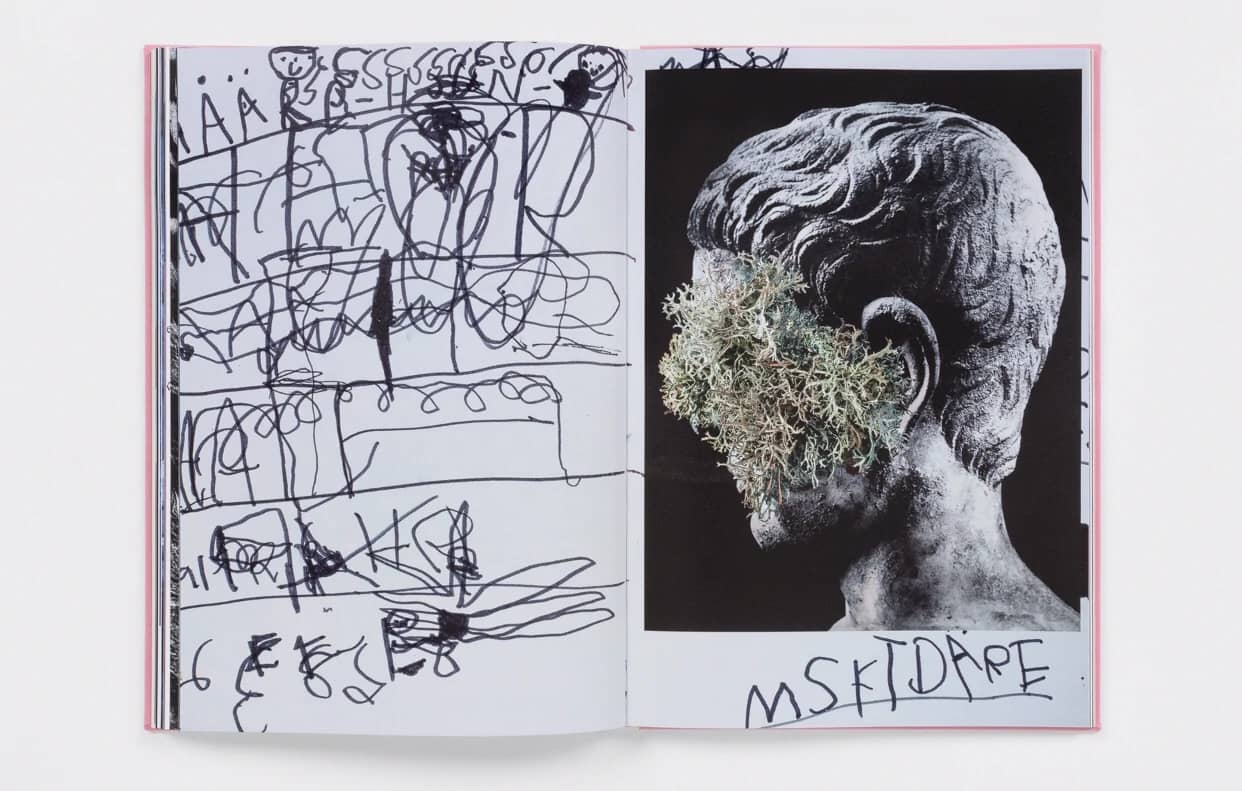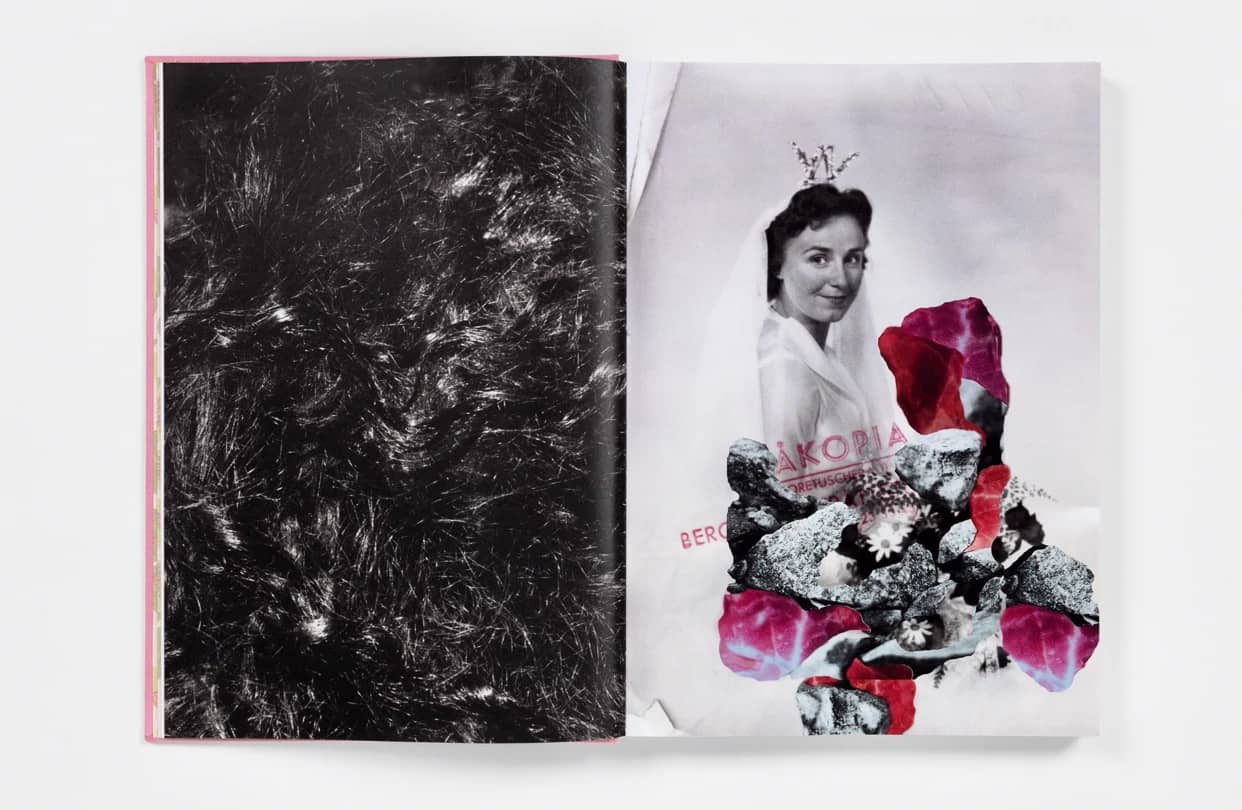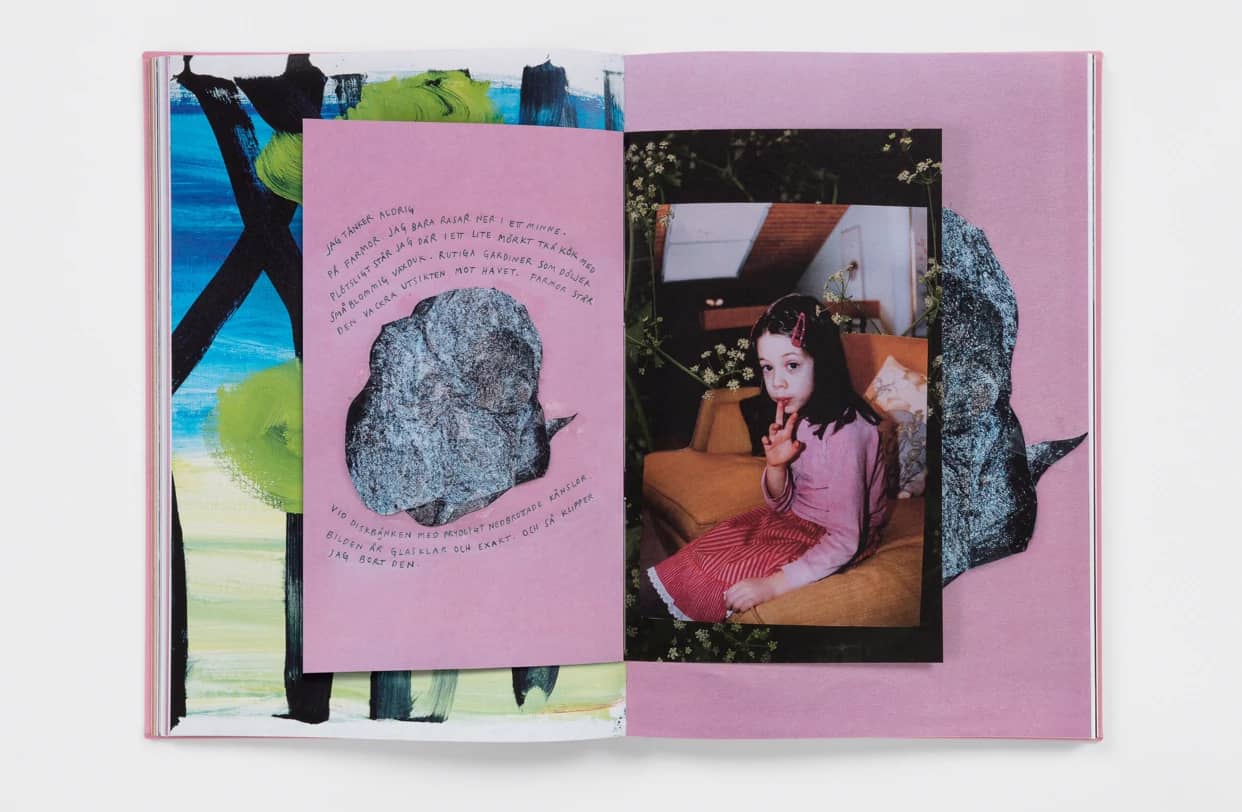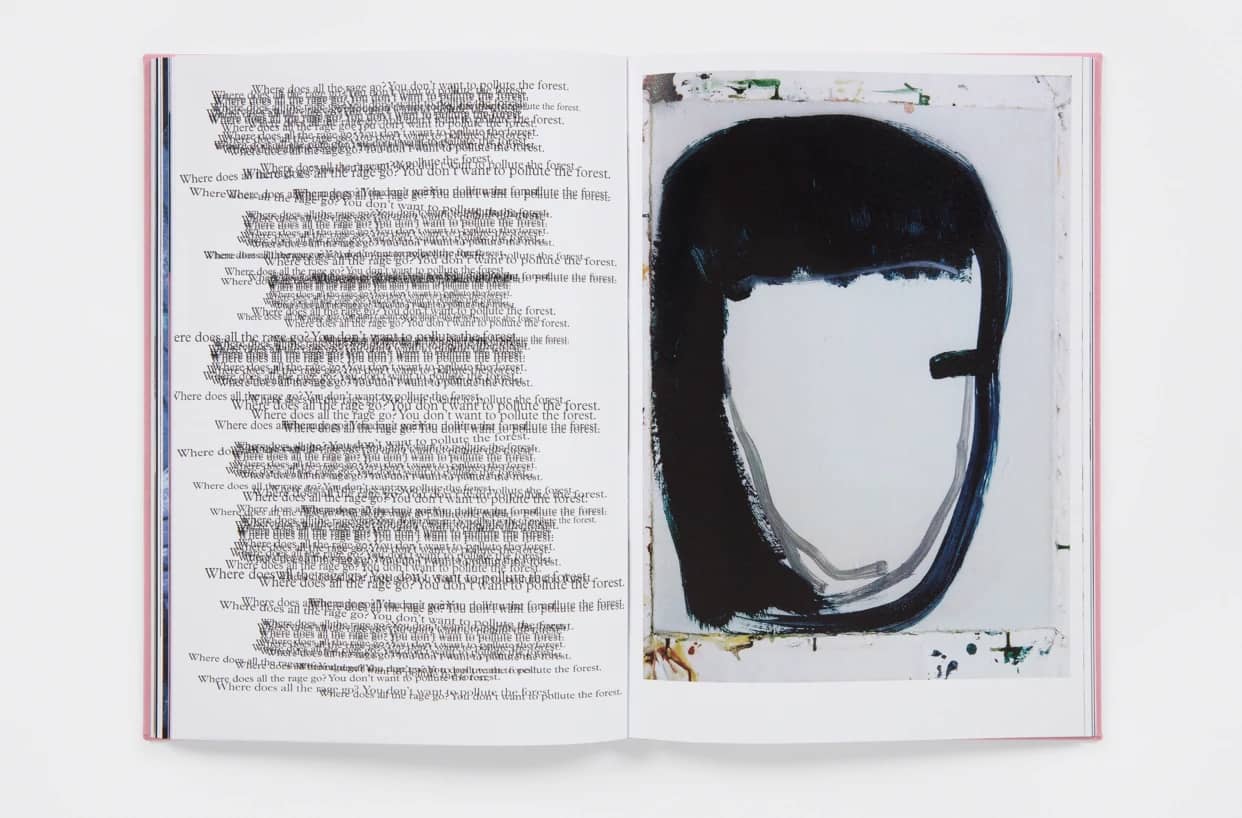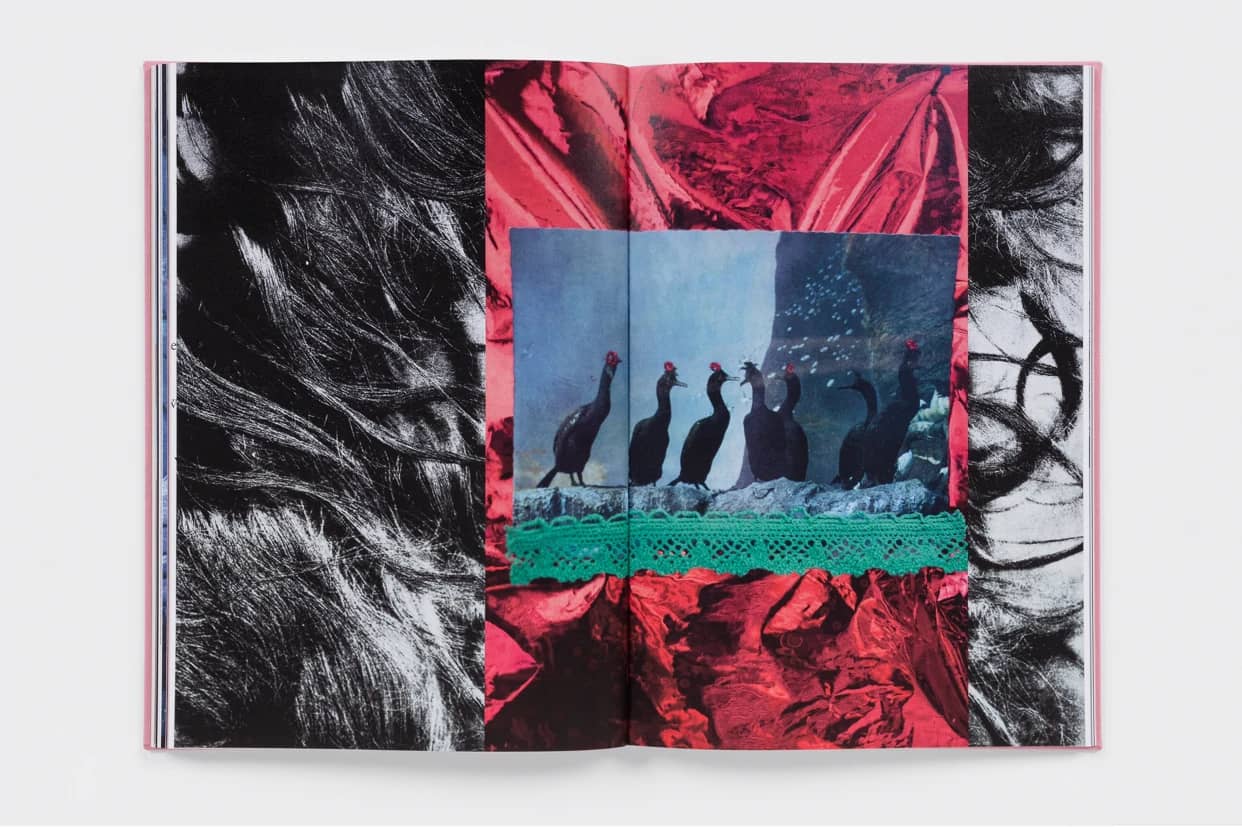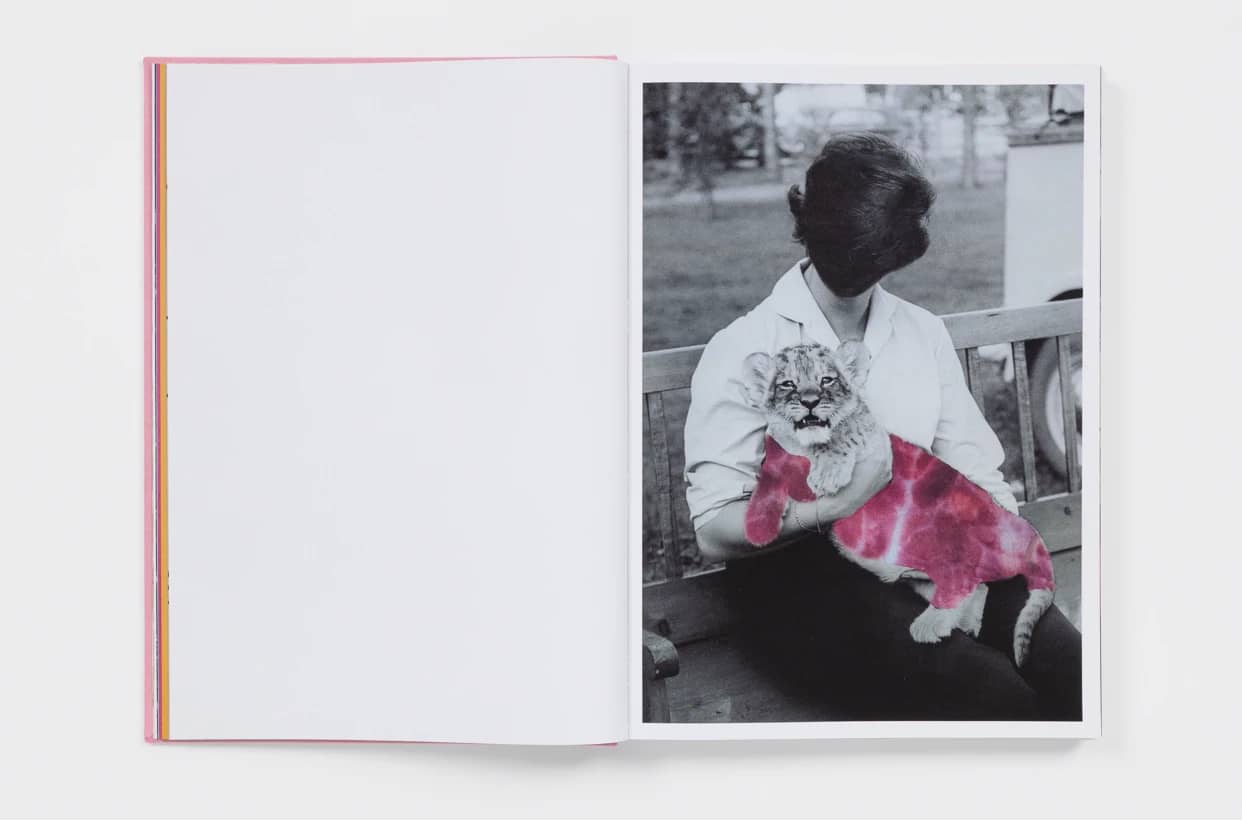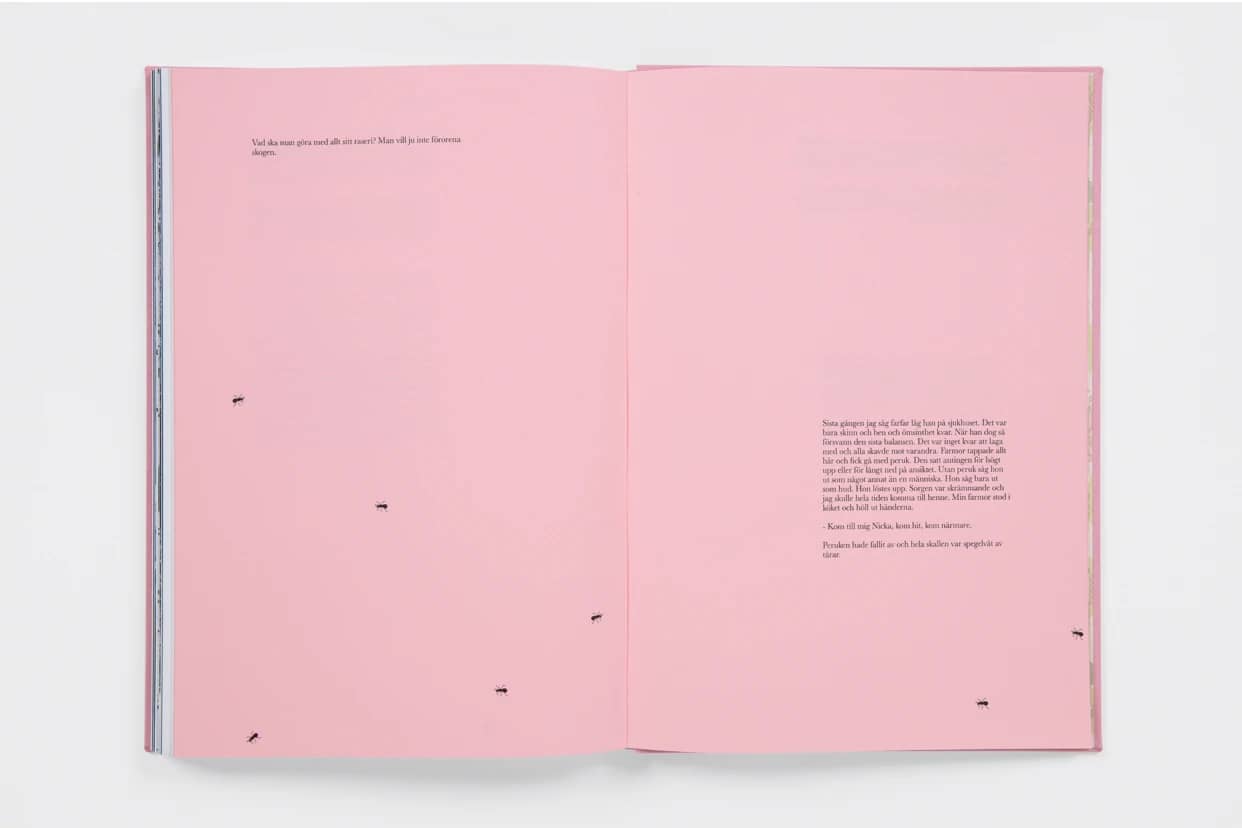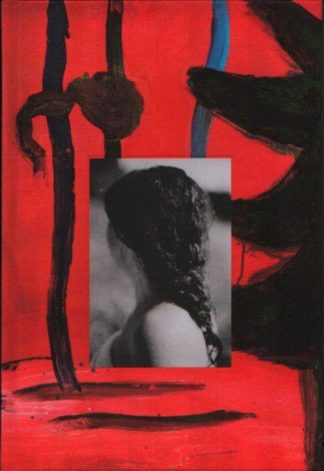« Bristningar (Rupture) est la partie centrale de la trilogie d’œuvres de Katinka Goldberg, dans laquelle elle « explore la tension entre la proximité et la distance », en essayant, non moins, de se situer à la fois en elle-même et dans le monde. La trilogie débute avec son livre Surfacing (2011) qui examine la relation entre elle-même et sa mère, d’une manière complexe et hautement poétique. Dans Bristningar, elle fait des collages qui, comme celui de Hans Bellmer, déconstruisent et rassemblent le corps, mais dans un but très différent, une guérison plutôt qu’un but destructeur ou pathologique. Et aussi un processus d’addition et de soustraction, ou plutôt, d’addition pour soustraire.
‘J’essaie de répondre à la question; combien pouvez-vous vous enlever sans disparaître? Dans quelle mesure pouvez-vous vous rapprocher avant que la proximité devienne une distance? »
Ses intentions sont à la fois formelles et psychologiques. D’un côté, elle repousse les limites du médium, dépasse l’impératif de la caméra et provoque un choc entre la photographie, la sculpture et la peinture. D’autre part, elle explore différents aspects de sa psyché, en utilisant le même type d’approche allusive, mais des moyens formels très différents de ceux déployés dans son précédent livre. Dans Surfacing, il semblait s’agir d’essayer de faire la paix avec ce qui semblait être une relation évidemment proche et parfois difficile, un laisser-aller peut-être. Bristningar semble plus tendre vers, non pas vers sa mère, mais vers elle-même. En faisant des collages fragmentés à partir du corps humain, Goldberg semble créer une métaphore visuelle, rien de moins, pour le processus de psychanalyse, déchirant l’âme, examinant les pièces et les données, puis reconstruisant un tout plus complet. Dans ces collages fragmentés et hautement abstraits, Goldberg utilise « le corps amputé puis reconstruit comme un moyen de visualiser une identité fragmentée qui a été réparée. Former une reconstruction de soi pour être vu. Voir comme une façon d’appartenir ». -Gerry Badger
“Bristningar (Rupture) is the middle part of Katinka Goldberg’s trilogy of works, in which she is ‘exploring the tension between closeness and distance’, trying, no less, to locate herself both within herself and within the world. The trilogy began with her book Surfacing (2011) which examined the relationship between herself and her mother, in a complex and highly poetic way. In Bristningar, she is making collages, which, like Hans Bellmer’s, deconstruct and reassemble the body, but do so with a very different aim, a healing rather than a destructive or pathological purpose. And also a process of add and subtracting, or rather, of adding in order to subtract.
‘I am trying to answer the question; how much can you take away of yourself without disappearing? How close can you get before the closeness becomes a distance?’
Her intentions are both formal and psychological. On one level, she is pushing at the medium’s boundaries, pushing beyond the imperative of the camera and provoking a clash between photography, sculpture, and painting. On another, she is exploring different aspects of her psyche, using the same kind of allusive approach, but very different formal means to those deployed in her previous book. In Surfacing, it seemed to be a matter of trying to make peace with what seemed to be an obviously close and sometimes difficult relationship, a letting go perhaps. Bristningar seems more of a reaching toward, not to her mother but to herself. By making fragmented collages from the human body Goldberg would seem to be fashioning a visual metaphor, no less, for the process of psychoanalysis, tearing the soul apart, examining the pieces and the data, then reconstructing a more complete whole. In these fragmented and highly abstract collages, Goldberg is utilizing ‘the amputated and then reconstructed body as a way to visualize a fragmented identity that has been mended. Forming a reconstruction of oneself to be seen. Seeing as a way of belonging’.” -Gerry Badger


